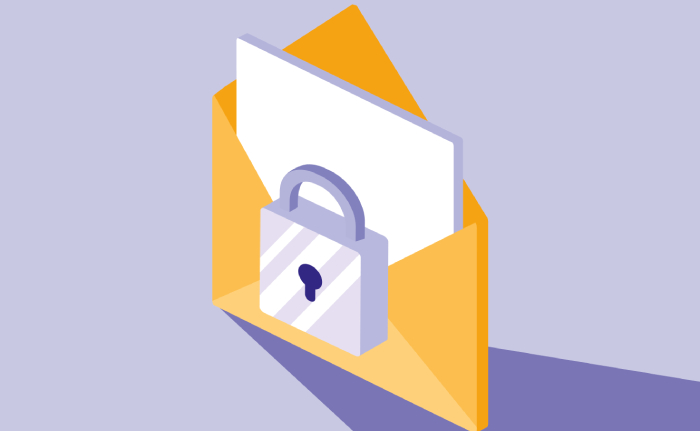Today, sophisticated phishing attacks, such as those leading to ransomware and BEC (Business Email Compromise) incidents, can easily bypass traditional security setups. Emails are a common entry point for cyberattacks. And the overwhelming number of cyber-attacks on emails of employees and business executives has made email security an important issue for organizations.
Security experts must approach email phishing protection in the same way they secure other traditional content repositories. Email service providers and anti-phishing services must prioritize giving their customers a detailed overview to help security teams improve their actions. If a malicious actor breaks into an email account, security teams may not know how they accessed individual messages.
How Phishing Attacks Have Evolved
Malicious actors profit through phishing attacks making use of the insecurity of their target users. Phishing attacks have evolved to take new forms such as spear-phishing and advanced forms like social engineering, business email compromise (BEC), and many others. In BEC, the malicious actor impersonates a higher official of the organization by using credentials resembling theirs and gains employees’ trust. They ultimately steal sensitive data or install malware. While the FBI attributed half of the cybercrime losses to business email compromise (BEC), BEC actors broadened their toolbox to compromise cloud accounts, organizations, and vendors. Stopping them will be an ongoing challenge.
While phishing attacks have dominated the email threat landscape for years, the increasing reliance on cloud email, the spread of SaaS and cloud-based platforms, and the fear of the pandemic have led to a resurgence of these attacks. Threat actors exploit the growing reliance on the cloud for email hosting or email forwarding to steal sensitive data, spread dangerous malware, launch sophisticated attacks, and spread malicious campaigns across their existing networks. And the consequences of inadequate email security measures affecting the confidentiality, integrity, and availability of valuable data of an organization have never been more significant in the age of advanced threats.
Trustwave’s 2021 Email Threat Report shows real-life examples of recent email threats and key trends from the past year to help one understand the current situation to prepare oneself better with an email security strategy for phishing and ransomware protection.
Cloud-delivered Email Systems
Beyond the onslaught of zero-day attacks, there is a shift in email security from signature-based verification of email receipts to continuous detection and response. There is also the use of Machine Learning to detect fraudulent emails and the hunt for latent threats that elude initial detection and get activated after delivery. Robust email security at the gateway level to scan incoming emails for malware and cloud-based email archiving systems to store emails securely are among the cyber resistance strategies that address the risks associated with email security. With the number of cyber-attacks and the advanced threat of malware, spam, and phishing attacks increasing globally, businesses should increase the acceptance of cloud-based email security.
To give you an example, an essential component of Microsoft’s threat protection is that Office 365 provides critical security alerts when a threat arrives via email and helps provide essential protection in the early stages of an attack like in Microsoft’s other security technologies. The broad visibility of email threats enables Office 365 to inform and improve its heuristics and protection with Machine Learning. It helps block new and emerging attacks in real-time to protect customers from attacks they may not even know they are protected from.
Latest Trends And Recent Evolution In Email Security
An ideal email security solution should be able to ward off threats such as phishing emails, BEC imitation attempts, malware, APT, and zero-days and prevent them from reaching end-users, providing multiple layers of protection. Besides, here are the latest trends related to how email security solutions are evolving in recent times.
- Secure Gateways: A better solution is the use of secure email gateways with a multi-layered approach. Email is integrated with applications such as file sharing and business collaboration suites, such as Office 365 and G Suite. It will lead to multiple entry points for malicious actors to exploit the system, meaning email security measures must include robust account recognition and access management tools. With that approach, a secure email gateway can ward off spam, prevent data loss, review content, encrypt messages, and much more.
- Better Email Strategies By Vendors: A cloud-based security system can help protect the business, customers, and employees from incoming malware and spam, phishing campaigns, zero-day attacks, and more. Policy-based security can integrate with secure email gateways such as DLP (Data Loss Prevention) content control and end-to-end encryption.
- Security Training And 2FA: Regular phishing simulations are essential to keep employees alert and detect phishing and fraud in emails. Introducing two-factor authentication (2FA) for the email account is a secure way to add a layer of security to the inbox.
- API-based Technologies: It is better to go for API-based solutions rather than using SMTP-based gateways to manage emails via inbound and outbound SMTP servers. They can provide extra insight and visibility to detect impersonation attacks and BEC better.
Final Words
AI-based security models and multi-factor authentication are becoming the norm in the world of email security.
The email security market will grow to $6.8 billion by 2025, according to the Global Email Security Market Research Report. Adopting newer technologies, such as boundary and gateway email encryption, client plugins, and cloud solutions is the need of the hour. With the recent announcement by Microsoft to invest $20 billion in cybersecurity, other vendors are also compelled to get in the race and look for ideas to improve the same. Organizations need new email security approaches that are capable of neutralizing novel and sophisticated attacks. As attackers continue to innovate, security teams must have adaptive email security technologies that can re-evaluate emails in the light of new evidence.


